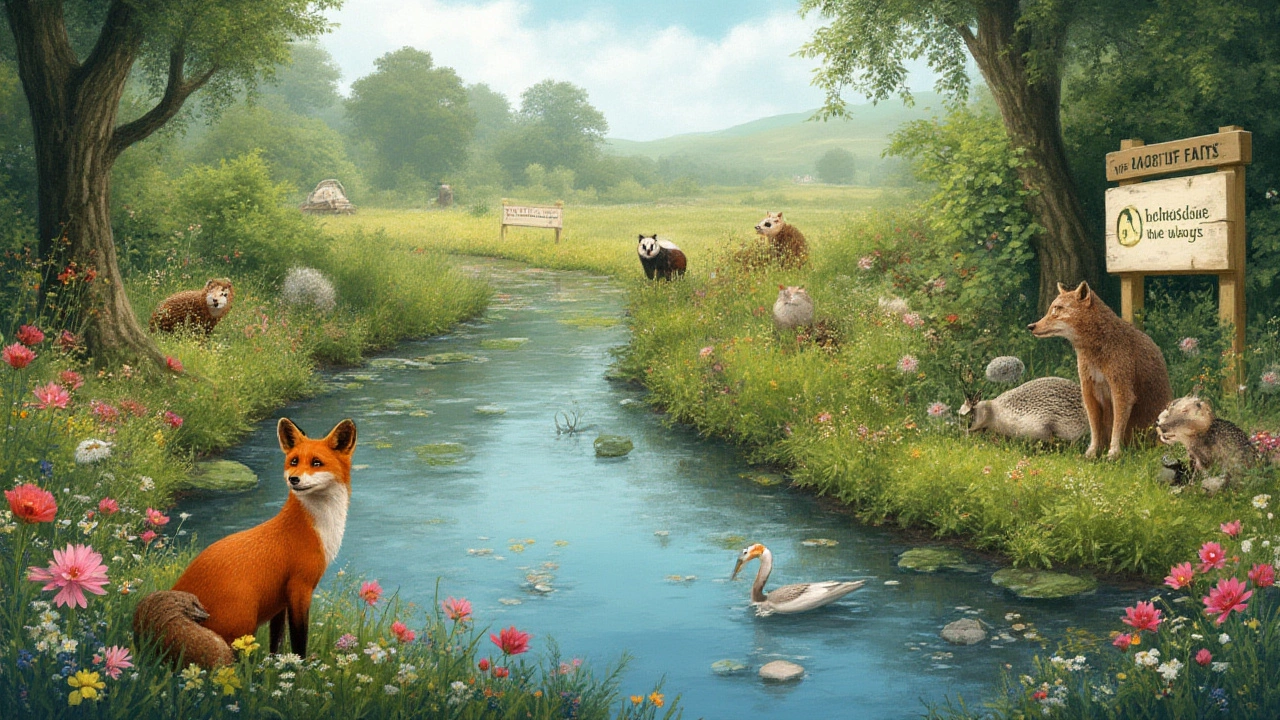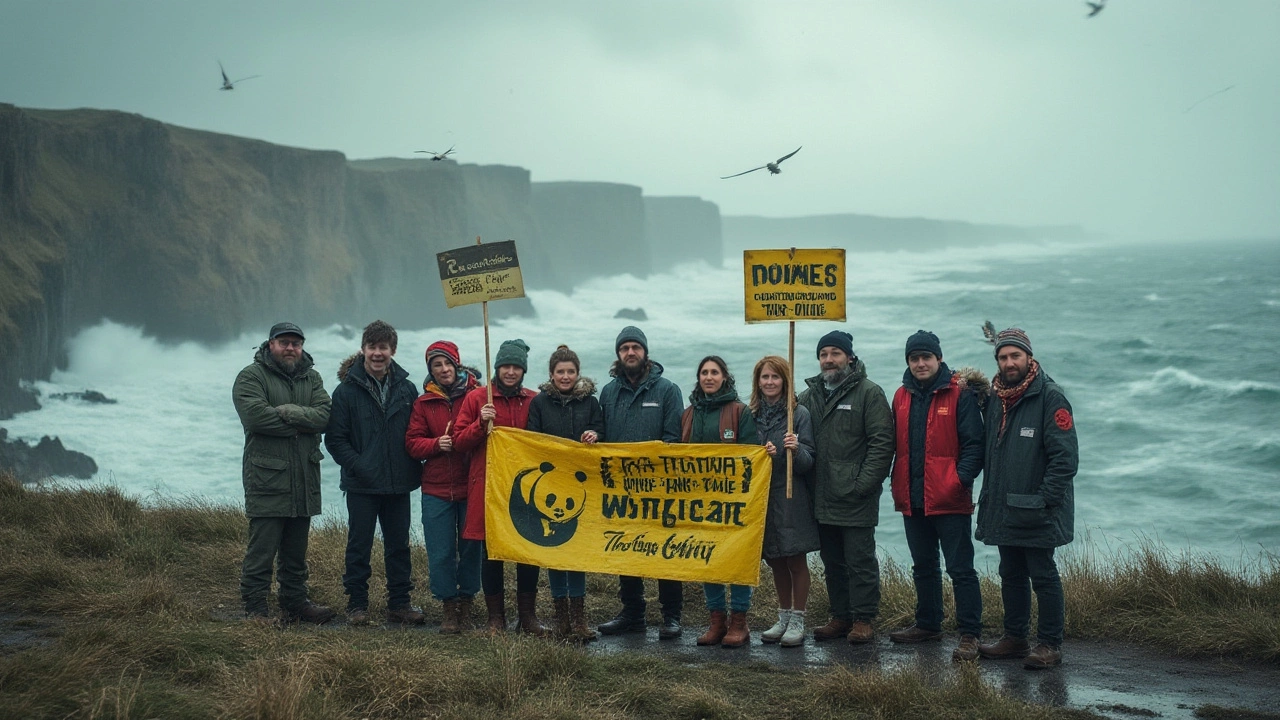Ever wonder who’s leading the charge to save the planet? Every time growing headlines shout about forests getting flattened or oceans choking on rubbish, certain names come up again and again. Two organisations stand out like neon signs: Greenpeace and WWF. You’ve probably seen them on TV, mentioned in climate marches, or at the heart of debates over oil drilling, whaling, palm oil, or animal extinction. Some people swear by their T-shirts or donate monthly, but what’s the real story behind these giants? Are they the fearless defenders we imagine, or is there more to it? Dig in—a few facts might surprise you, and if you care about the planet’s future, you’ll want to keep reading.
Greenpeace: The Unapologetic Activists
Greenpeace didn’t exactly start as a well-oiled charity machine. In 1971, a group of Canadian hippies and journalists squeezed into a small fishing boat and tried to stop US nuclear testing near Alaska. No one expected their act of protest to kick off a movement, yet that determined little crew basically gave birth to modern direct-action environmentalism. Now—a half-century later—Greenpeace operates in over 55 countries, with more than three million supporters. Their mission? Nothing short of “ensuring the ability of the Earth to nurture life in all its diversity.” Sounds grand, but what does that mean day-to-day?
Most folks know Greenpeace for its bold campaigns and daring stunts. Remember activists scaling government buildings, chaining themselves to oil rigs, or zipping inflatable boats between whaling ships and harpoons? Those images are Greenpeace classics, and they serve a purpose. The idea is simple: if politicians or companies won’t listen, they’ll make a scene so public and dramatic that ignoring them becomes impossible. It’s helped—sometimes. In 2015, they played a key role in pushing Shell to abandon plans for arctic drilling, a huge win.
But it’s not just flashy protests. Greenpeace uses research, lobbying, and media campaigns to back up their actions. Take their investigations into illegal fishing or their detailed reports on deforestation linked to brands like Nestlé. They don’t just shout; they name names and demand accountability. In 2022, they exposed links between soy farming and Amazon rainforest destruction, putting both agri-businesses and supermarket chains under pressure. These campaigns often lead to real-world changes, from toughened company policies to tighter government regulation.
Greenpeace isn’t afraid to get political. They campaign hard against fossil fuels, nuclear power, overfishing, and genetically modified crops. Critics sometimes slam them as too radical or unrealistic, but their supporters think that’s exactly what the world needs. Their “no compromise” approach is both their strongest asset and their biggest headache. For instance, the group’s opposition to any form of nuclear energy ruffles feathers, even among climate scientists. Is it stubborn, or just principled? The arguments rage on.
If you want to get involved, you can go beyond donating. Greenpeace relies heavily on grassroots activism. Volunteers organise local climate strikes, beach cleanups, and protest events—not just the big stuff. Want to ditch plastic, switch to renewable power, or help shut down a polluting factory? Chances are, a Greenpeace campaign already exists, and they’ll walk you through every step. Their website offers tons of toolkits, petition links, and even training in non-violent direct action if you fancy making news instead of just reading it.
But Greenpeace’s real power may be in its independence. They don’t accept money from governments, political parties, or major corporations. This means they can campaign wherever they see fit, without worrying about donors calling the shots. Their annual budget—about €300 million in 2023—comes almost entirely from individual contributions.
So, what’s the impact? Sometimes it’s huge: stopping toxic shipbreaking, pushing supermarkets to go plastic-free, or helping get entire whale species off the endangered list. Sometimes, it’s more subtle: building momentum, raising awareness, or inspiring the next generation of activists. If you’re looking for an organisation that treats every campaign like a moral battle, even when it risks controversy or deadlock, Greenpeace is your gang.
| Greenpeace: Key Facts | Details |
|---|---|
| Founded | 1971, Vancouver, Canada |
| Number of Countries | 55+ |
| Global Supporters | 3 million+ |
| Main Tactics | Direct Action, Investigations, Media Campaigns, Advocacy |
| Major Areas | Climate Change, Oceans, Forests, Toxics, Food |
| Funding | No government or corporate funding; individuals only |

WWF: Science, Partnerships, and Conservation on a Massive Scale
If Greenpeace is the megaphone-wielding firebrand, WWF is the science-driven diplomat. Famous for its panda logo, WWF (World Wide Fund for Nature) is actually older, founded in 1961 by a bunch of conservationists and even royal supporters in Switzerland. Today, with active projects in over 100 countries and an army of 35 million supporters worldwide, WWF is the world’s biggest conservation charity. It’s rooted in evidence, not confrontation, and operates more like a giant global network of scientists, policy experts, wildlife rangers, and community organisers.
The mission is clear: build a future where people and nature thrive together. While that sounds warm and fuzzy, WWF backs it up with some heavyweight action. They’re the folks working on everything from saving tigers in India, protecting polar bears in the Arctic, restoring coral reefs in the South Pacific, to curbing the illegal wildlife trade. And when they talk about “projects,” it’s not one ranger and a tent—it’s thousands of local staff, satellite monitoring, corporate agreements, and flashy global campaigns.
Unlike Greenpeace’s direct-action model, WWF focuses on deep partnerships. They spend years negotiating with governments, Indigenous groups, companies, and other NGOs. For instance, the organisation helped double the population of wild tigers since 2010 by supporting antipoaching patrols, funding research, and working with local law enforcement. Or take the time they helped get the world’s biggest palm oil suppliers to improve their standards, reducing deforestation and habitat loss.
Science is central. WWF’s research teams monitor animal populations, map shrinking forests, and track climate threats with the latest tech. Their “Living Planet Report,” published every two years, is basically the gold standard for anyone wanting to see how global wildlife is coping. Their 2022 report showed a shocking 69% drop in vertebrate species populations since 1970—a stat so shocking that it dominated global headlines and even made the agenda at international climate conferences.
WWF isn’t just about animals, either. Projects include helping communities develop sustainable livelihoods—like paying fishers to protect rather than overharvest coral reefs, or teaching coffee farmers in South America to use wildlife-friendly techniques. They’ve also got pioneering efforts in climate solutions: renewable energy access for rural villages, restoring peatlands, supporting global pledges to stop deforestation, and pushing big banks away from funding fossil fuels.
But there’s a catch. Because WWF partners with giant companies—think Unilever or Coca-Cola—they sometimes get flak for not being tough enough. Critics argue that these relationships risk greenwashing: making a polluting company look good for taking baby steps. WWF responds that change is slow, but working from the inside shifts more money, rules, and technology to where it matters. Some scandals (like reports of misconduct among partner rangers in Africa) have hit, but the group has tried to boost transparency in recent years.
For supporters, WWF is easy to join. Adopt an animal plushie, take on a sponsored run, fundraise for rhinos, or just sign up for a monthly “planet protector” membership. Their website also runs earth-friendly lifestyle tips: reducing food waste, boosting home biodiversity, sustainable fashion guides, and even how to have a climate-positive holiday. If you like your activism friendly, expert-backed, and global in scope, WWF is a safe bet.
WWF is the keyword people search most when asking about global conservation work. It has that brand recognizability thanks to big partnerships, celebrity ambassadors, and a reliable presence at everything from COP climate meetings to Netflix documentaries.
| WWF: Key Facts | Details |
|---|---|
| Founded | 1961, Morges, Switzerland |
| Number of Countries | 100+ |
| Global Supporters | 35 million+ |
| Main Tactics | Science-led Conservation, Partnerships, Policy Advocacy, Community Action |
| Major Areas | Wildlife, Forests, Oceans, Climate, Food, Freshwater |
| Funding | Individuals, governments, corporate partners |

How Can You Decide Where to Put Your Support?
Loads of people ask—which is better, Greenpeace or WWF? It’s not a competition. They’re wildly different animals, in every sense. Greenpeace grabs attention, names-and-shames, and pushes big, disruptive change straight to government doors and corporate boardrooms. If nobody’s talking about a problem, Greenpeace will make sure it’s headline news by tomorrow morning. They don’t flinch at controversy, and many of their staff are trained in civil disobedience.
WWF, on the other hand, often works quietly behind the scenes, slowly shifting laws, policies, and market practices. Their huge science crew crunches data on climate change, endangered species, and habitat loss, then helps write the rules and fund the solutions. With deep enough pockets and strong local ties, they can pull off massive, long-term recovery efforts—think moving entire elephant herds to safer homes, or creating nation-wide networks of protected areas.
So, where should your charity quid go? Here’s something to think about:
- Want drama, public confrontations, and action-packed activism? Greenpeace is your home. Your money supports stunts, research, and grassroots campaigns that shame polluters and push urgent change.
- Want evidence-led projects, wildlife adoption, and global reach into big institutions or governments? WWF fits best. Here, your donation helps rangers, funds reforestation, or powers satellite wildlife tracking.
- If you’re a planner, WWF’s transparency and annual reports make tracking impact easy. For more radical, grassroots energy and independence, Greenpeace is hard to beat.
- Still not sure? Volunteer for a local project—maybe a city river clean with Greenpeace, or a tree-planting effort led by WWF. You’ll get a feel for the mood and methods of each group.
- Worried about your money being well spent? Greenpeace’s donor model avoids conflicts of interest, but WWF’s vast global network arguably stretches contributions further via partnerships and government funding.
There’s no shortage of environmental work to be done. In fact, the world’s facing challenges so huge—think collapsing fish stocks, rising sea levels, or the annual carbon emissions count climbing ever higher—that picking sides might miss the bigger picture. Supporting any group with a real vision and a proven track record is what counts, especially if it gets you moving, learning, or making changes at home.
Both Greenpeace and WWF have left a deep mark on the world. Whether you join, donate, or just keep up with their wins and losses on social media, knowing what they do—and how they do it—is a handy way to tune out the green hype and focus on real, lasting impact. Next time you see a headline about forests burning or whales being hunted, you’ll know exactly who’s fighting hardest—and how you can help.
